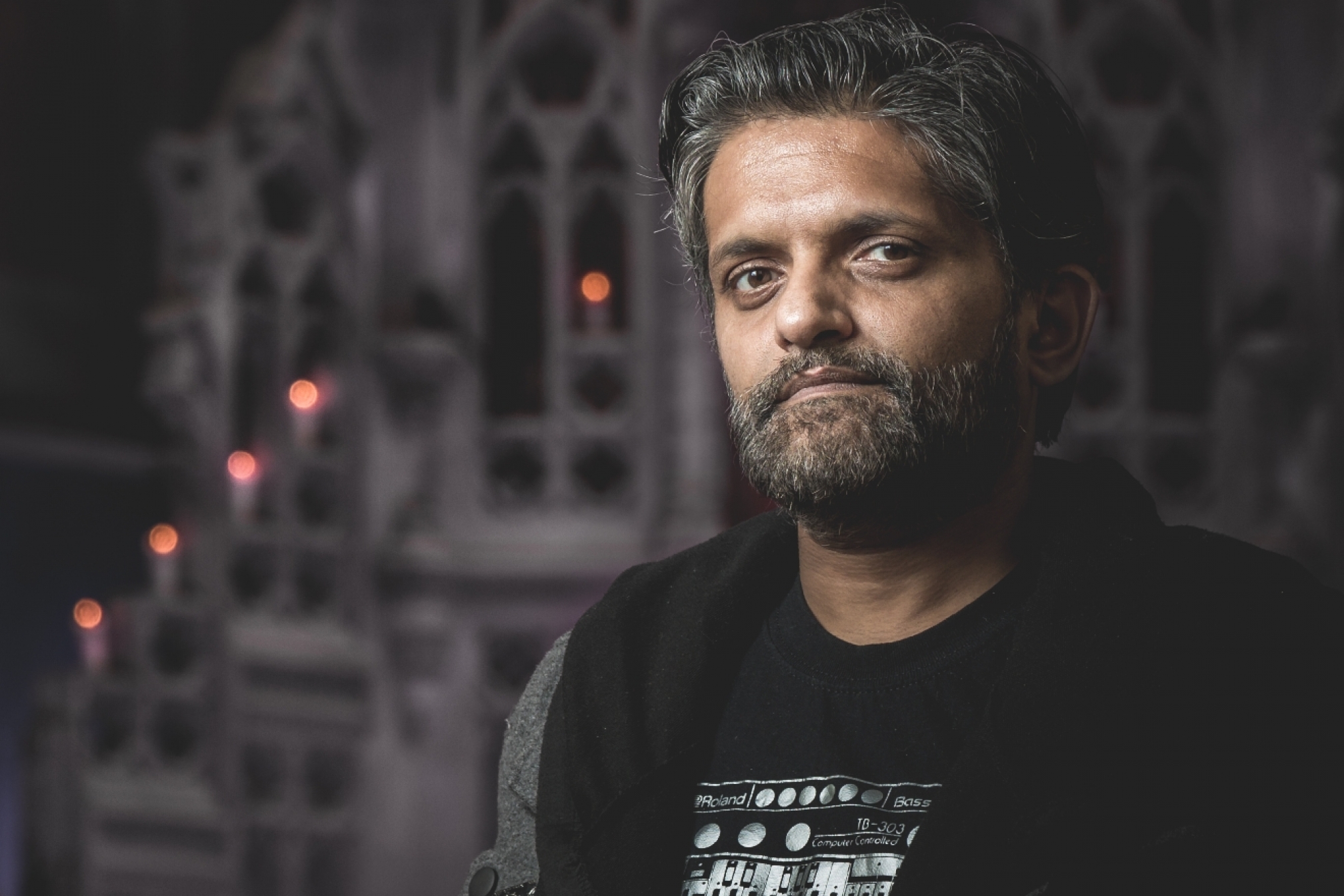 Interviews
Interviews
Suddi Raval recalls the revolutionary times of acid house in the UK
“I might as well had not even been thinking about making music before I went to the Hacienda.”
If you’re not familiar with the name Suddi Raval just yet, you’ll surely be enticed to know more about him now. Experiencing the first-ever presence of acid house records in the UK in 1986 the artist came to totally immerse himself in the genre and became a prominent figure in spreading its sound.
Known to frequent the legendary Blackburn raves and the Hacienda since its early days, he and fellow regular Jonathan Donaghy then went on to form Together, releasing the 1990 hit ‘Hardcore Uproar’ which made it to #12 on the UK Singles Chart. Even as you listen to it now, it transports you to that early rave era with its jubilant piano melodies, uplifting strings and energetic percussions that are decorated with synth sounds that frolic along the over-six-minute track. It’s no wonder many are calling it a masterpiece from the warehouse days.
That sound of a crowd you’re hearing leading up to the thirty-second mark? It was recorded at a rave party in Nelson, UK.
Furthering his passion for music-making, Raval dove into writing about the genre that changed his life. He released the famed coffee table book ‘A Brief History of Acid House’ where he highlights the history and legacy of the genre, capturing the mood, key players and major events that revolved around it. From talking about the TB-303 synth to Frankie Knuckles, the UK Government and more, no topic is left unexplained when it comes to matters of the most pivotal moments in acid house history.
Most recently, we’re lucky to have Raval bless us once again with his musical prowess via a split vinyl release between Hong Kong’s Acidchicken Records and the Shenzhen-based Cutt Records. Representing the Acidchicken side, Raval bestows three tracks that demonstrate and celebrate the versatility of acid house. Flipping over to Cutt’s side, you’ll be met with the same steady, propulsive beats and squelching sounds that best represent the genre by Shenzhen-based, Egyptian DJ/producer Purple Key who is well known throughout China's underground club scene.
Mixmag Asia reached out to Suddi Raval via Acidchicken’s Administrator, Victoria Linden, to get a feel of what it was like to have immersed and evolved in a revolutionary time for acid house in the UK. Read the interview below.
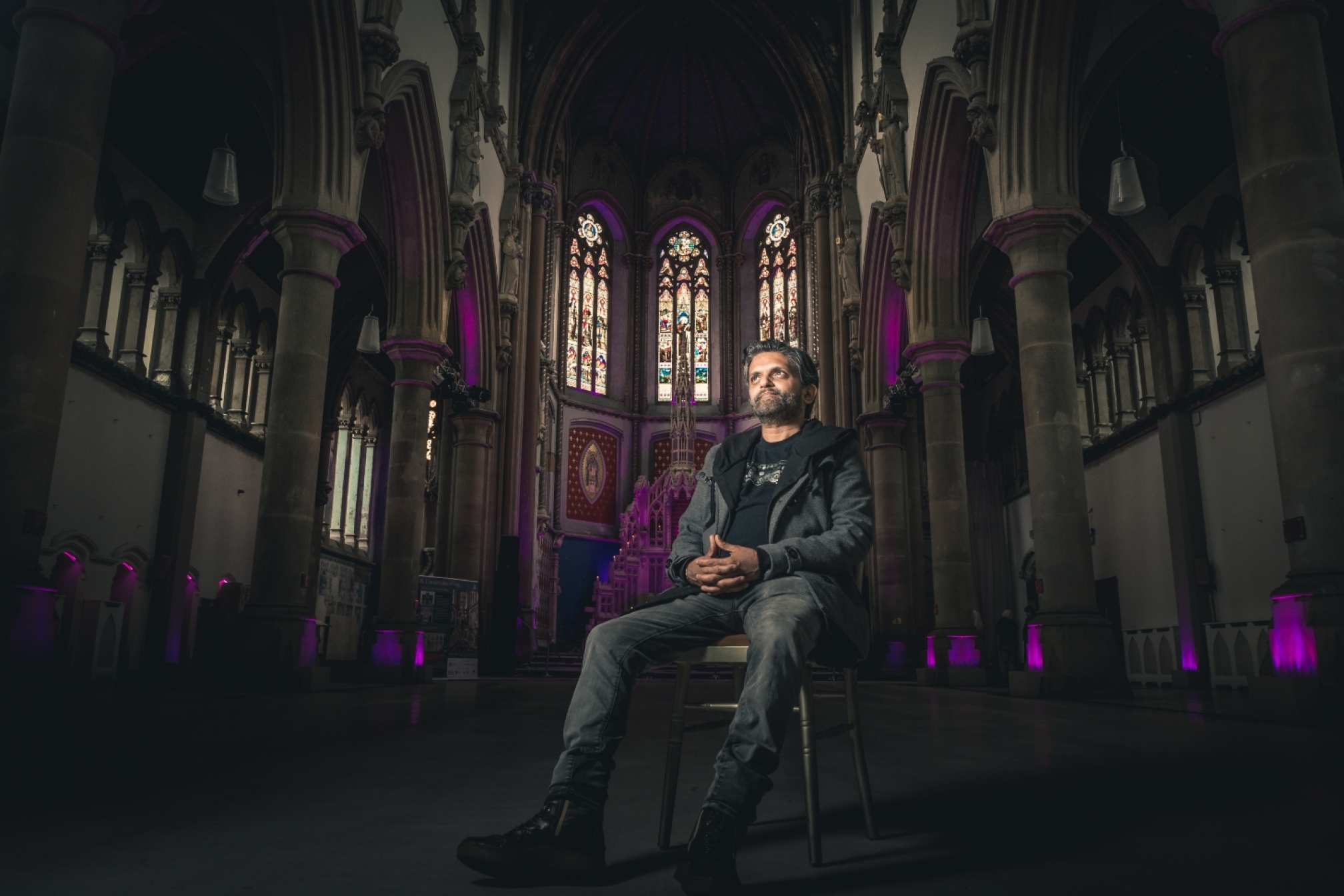
Hi Suddi! Can you start by giving our readers a brief history of your involvement with the acid house scene in the UK?
My involvement in acid house began at a very young age as I put on some of the first acid house events at the age of 17 in 1988, booking Stakker Humanoind before they entered the top 20 in the UK and by the time of the event, they were a chart act! I frequented the Hacienda Blackburn raves by the following year and releasing records on Pete Tong’s label, shortly forming Together after meeting Jonathan Donaghy.
What was your first rave experience like?
Incredible! In the space of three days I went to three of the best events in the North of England. I’d already been listening to house music for a couple of years obsessively since the age of around 15, mainly on compilations and on the radio with local legend Stu Allen’s dance shows. Then as the first acid house records started coming to the UK in 1986, I was ready for this scene that was about to explode, having the great fortune of having the legendary Hacienda only a bus ride away from my home!
So when did you start going to the Hacienda?
It was 1989 when I first went. I knew of the Hacienda but was always a bit nervous about it thinking it’d be scary or unfriendly! I don’t know why really but something intimidated me about the prospect as it was already legendary long before I’d stepped foot into the place. Then on my first visit I couldn’t believe how down to earth and into the music everyone was; I found my home. I became addicted and some weeks I went five nights a week, even on the days they didn’t play dance music, like the Monday nights and the Thursday student nights.
What impact did the Hacienda have on your musical journey?
It completely reshaped the way I thought about music! The impact it had upon my music was as profound as “I might as well had not even been thinking about making music before I went to the Hacienda”; such was its impact.
Were there any other Hacienda regulars you hung out with at the time?
You’d see so many faces in there that went on to become massive, Sasha was possibly the biggest name to come from there. Although you often hear of the indie connections between the Hacienda and the local guitar bands, you’d rarely hear that kind of music played much except there were alcoves that you didn’t dare step foot into as they “belonged” to the Happy Mondays!
In your opinion, how quick did the UK’s acid house scene take off?
It felt instant. I only heard of the parties on the news at first. They were portrayed as scary, drug fuelled gangster-run, sordid-affairs then my older brother confided in me that he was going to them in disused railway arches in Manchester. They are looked at as legendary now, with all the bands in Manchester attending them.
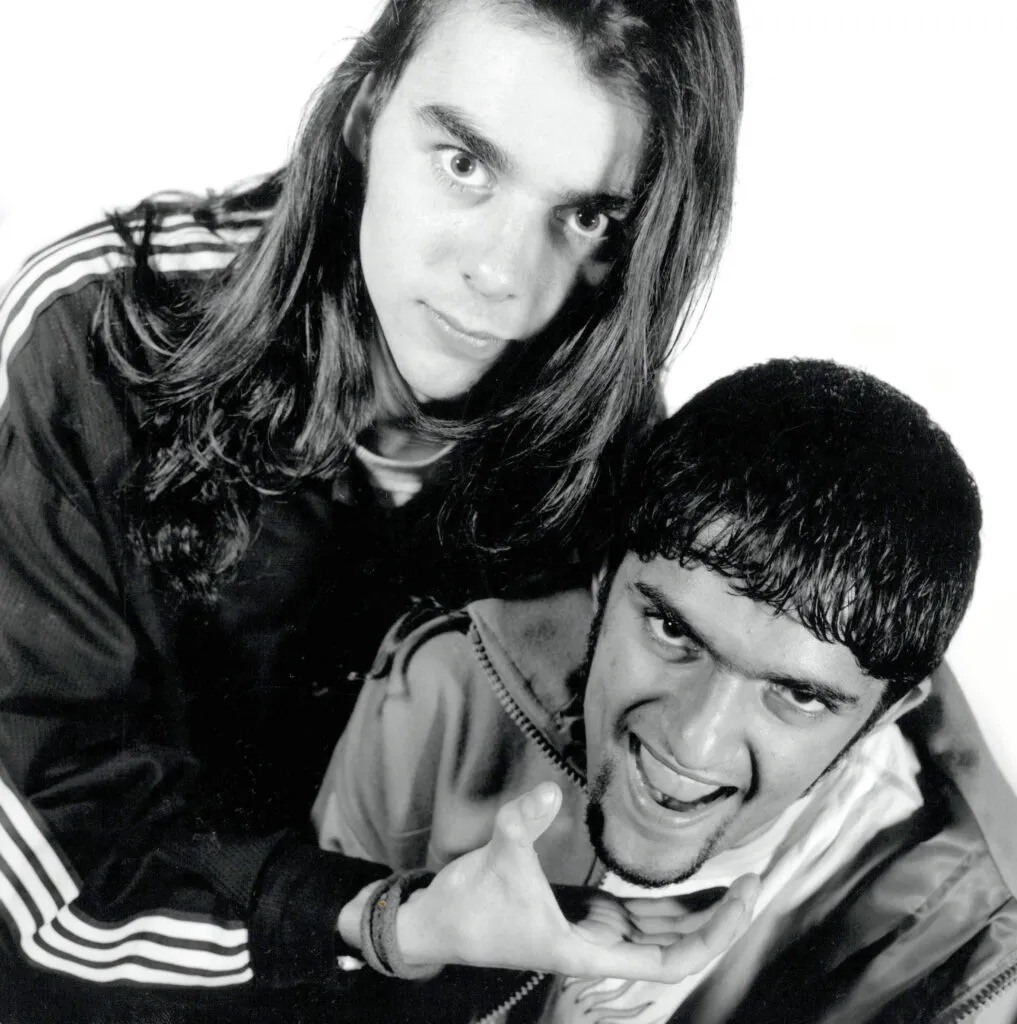
How did you form Together?
As I mentioned, I met Jonathan Donaghy at the Blackburn raves. It was outside one of the biggest parties and I began doing crazy vocal noises to him. It blew his mind and he asked me to make music with him. Little did he know just how many ideas I was bursting with at the time.
When Together’s Hardcore Uproar hit the charts and you saw yourself on TOTP amongst other acid house pioneers, how did you feel about music in the UK at that time?
The music in the UK at the time was incredible. It felt as if many of my friends I started clubbing with were trying their hand at music and we all seemed to be doing pretty well out of it. When we entered the charts there was us, LFO and Tricky Disco all being interviewed by teenage pop magazines such as Smash Hits asking us questions like “how did the electro bleep craze start?” The other two’s answers weren’t that serious, but we said it was down to the DJs!
Do you remember when you got your first TB-303 and how much you paid for it?
I was incredibly lucky in getting hold of my TB-303 around 1991 for £100. I actually paid £200 for that and the TR-606 but I sold the 606 for £100 — I wish I didn’t!
Fast forward to 2023, what other musical milestones do you hold dear to your heart? Can you tell us more about the work you did on game soundtracks, particularly the LEGO franchise and your involvement with their releases?
Electro had a profound effect on me even before acid house as it was so fresh and exciting! Techno also had quite an impact as it was around the time of House, but it largely stripped away the melody in House and you were left with just the energy. That was pretty exciting and a great alternate look at how a piece of music can drive the dancefloor.
The videogame work has had a massive effect on my life and work in ways I never expected. It was originally just a bit of fun. If anything, a temporary diversion from making dance records. I thought I’d score one or two game soundtracks but that was in 1994 and now I’ve been doing it for 29 years! The way it has made me think about structure and melody has been hugely influential on my own music. As I cut my teeth on the Gameboy, you are forced to write stronger melodies and in turn my dance experience helped me build tension and energy in the game music.

Moving onto your Hardcore Uproar Symphony concert; can you tell us how it came about, your inspiration for the concert, what other artists were involved and how it was received by the public?
It was actually Simon Withenshaw’s idea who I used to work with at TT-Games where we made LEGO games. He is a musician who, after seeing Pete Tong’s Ibiza classics on TV, felt we could do that and after arranging a few dance classics such as Da Funk (where we played the 303s in trumpets!) and Dreams of Santa Anna by Orange Lemons, we met a conductor, and he has an orchestra. This was Simon Robertshaw’s Skaparis who joined us at the Gorton Monastery that formed a very beautiful setting for such an event. The BBC even came down to do a feature that’s on my personal website.
Can you tell us about your much-loved live set at the infamous ‘I Love Acid’ night in London; who you shared the stage with and how it felt performing live at one of the city’s most revered acid house events?
This was dream come true stuff! Joshua Doherty who runs the nights messaged me to ask if I was free on the date of the event! It came out of nowhere - I played alongside the mighty Luke Vibert, Wes Baggley, Posthuman, Tasha, Cursor Miner, Tsuin and Dexorcist. Still pinching myself about what happened that night. I guess I was already beginning to be part of the crew as Balkan records, who are the same guys who run the nights, had recently signed a new track of mine and then they recently asked me to come down to group photo shoot of all their artists which was really special!
What’s your take on the longevity or evolution of acid house from the 90s till now? Has there been any major changes?
The scene has had lots of ups and down. After the explosion of acid house in the late 80s, its popularity waned slightly as the underground scene shifted to other subgenres of house such as Balearic and progressive as pioneers such as Sasha championed the scene and the commerciality of it helped the events draw bigger and bigger crowds. But I always stuck to what I loved.
To be honest, I didn’t expect the massive resurgence like what we have today. It has always popped its head up and leaped out of the deep waters as previously underground artists such as Leftfield, Chemical Brothers and Prodigy introduced 303s into the mainstream. Then when Roland saw the commercial potential with the sound and subsequently re-released a string of budget acid boxes, the scene truly returned as producers could get their hands on a hardware machine and twiddle the knobs to make the squelches the way nature intended!
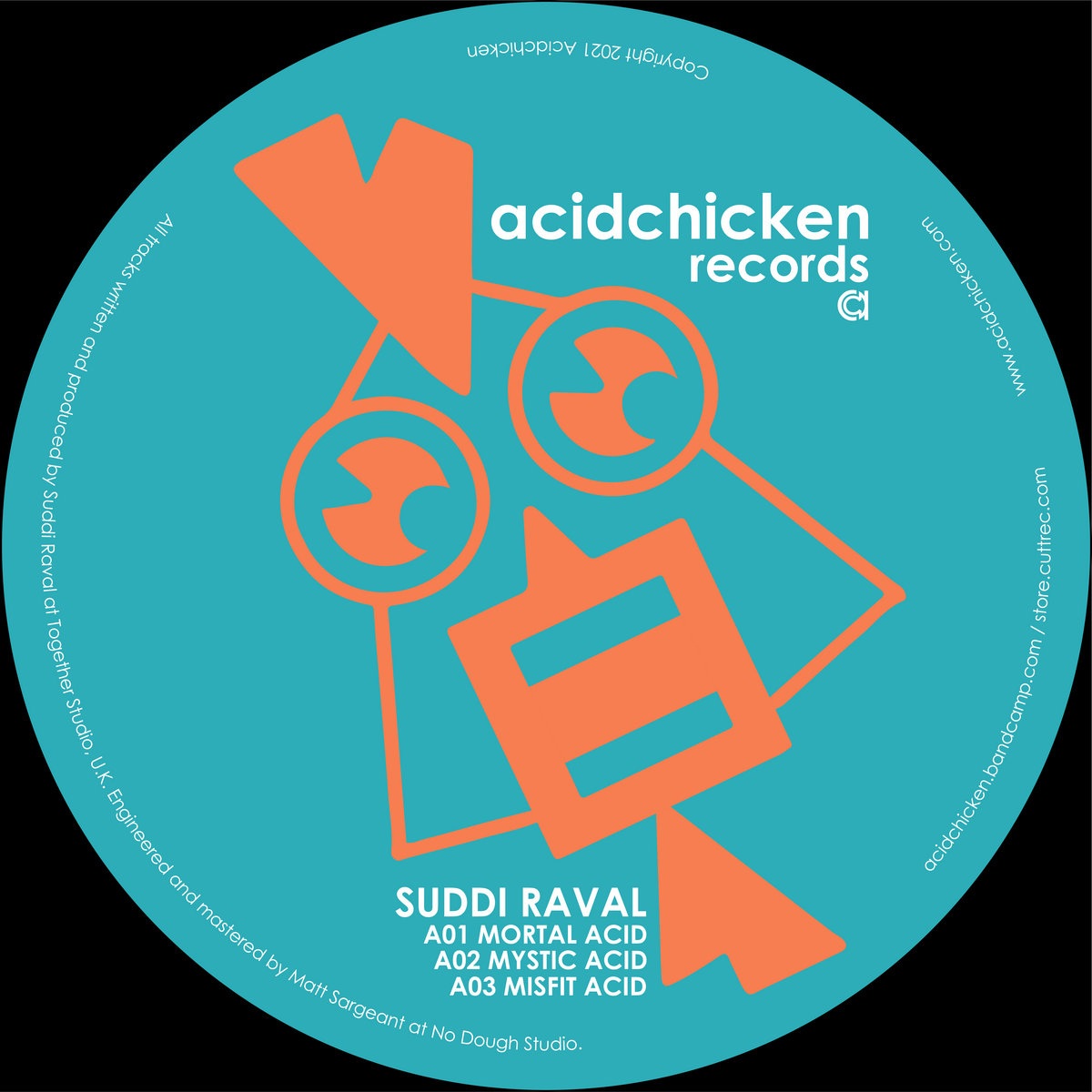
Your new EP is a split vinyl on Hong Kong-based Acidchicken Records and Shenzhen-based CUTT Records with six fresh new tracks from yourself and Shenzhen-based Egyptian artist, Purple Key. What does this say about the globalization of acid house to you as a UK-based artist releasing on a label half the world away?
This is pure magic to me! Being able to record in the UK and release around the world is just heaven, made all the better because on the flipside, the music by Purple Key is so close to what I’m making right now!
Can you give us a brief introduction to your tracks featured on the vinyl? And any upcoming releases on other labels etc, more books in the works or symphony events in the near future.
'Mystic Acid' was me trying to create a more mysterious and abstract brand of acid with strong melodies and synthetic percussion that evoked a mood of Asian rhythm.
'Misfit' was a nod to acid house’s rebellious trait. Its controversial past and a celebration of its ever changing and more than ever relevant future.
'Mortal Acid' was originally a four-on-the-floor house affair but as lockdown began I experimental with fusing electro beats and this was one of the first putting 303s into those beats and that’s how this EP came about.
Some of my future releases on different labels include tracks on Suena Hermosa, We’re Going Deep, Further Electronix Moleskin and Hello World. The funny thing is, this is still material that I produced in lockdown that’s taken some time to come out due to massive delays with pressing.
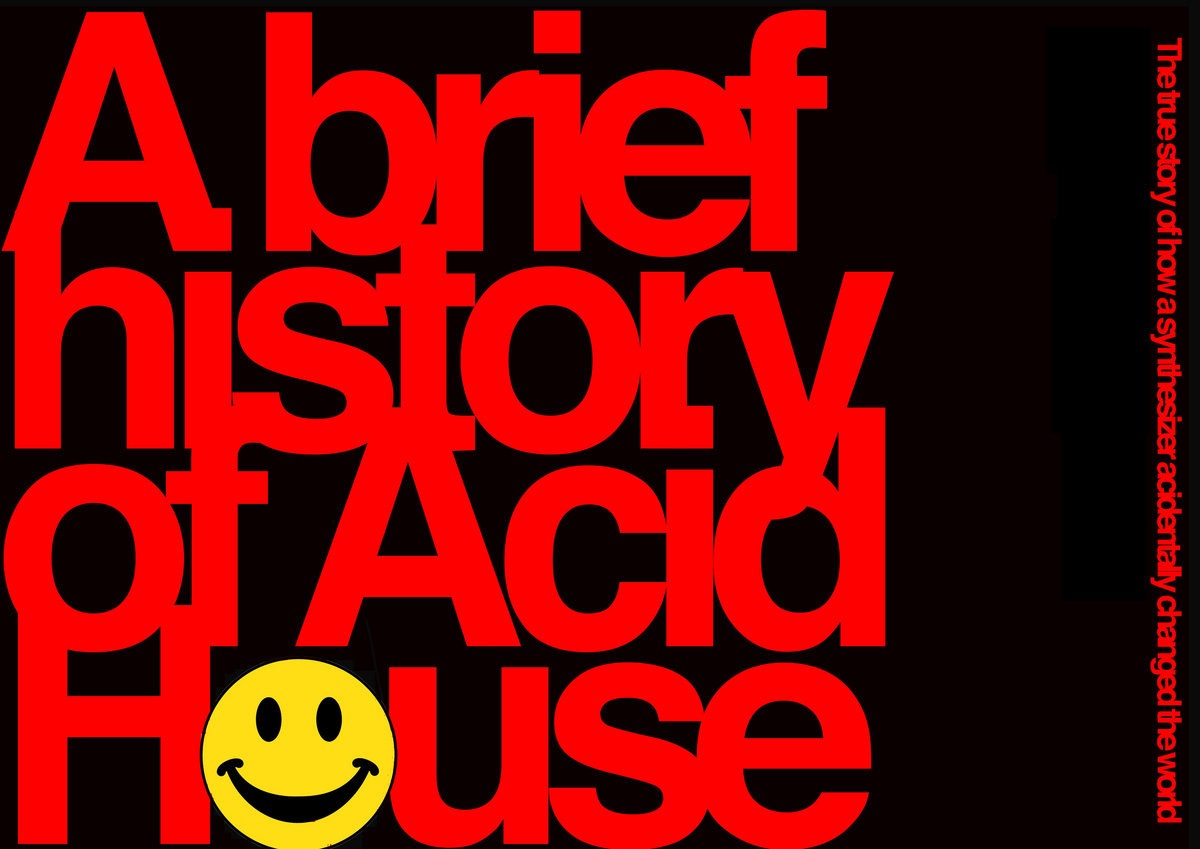
Acid house is more than just a musical genre. As can be read in your book ‘A Brief History of Acid House’, acid house encompassed a subculture which grew from the Chicago warehouse/club scene that exploded when it was introduced to the UK. What was your inspiration for writing on the genre?
I had always wanted to do this book and honestly, I had much bigger aspirations, but I had to be realistic as I was doing everything myself and never really had any kind of budget. So capped it at 60 pages; it could probably have been 600 pages if I had all the interviews I had planned for it, most of which I had conducted myself. If time permits, I’d love to finish that bigger project as there is so much stuff still yet to say and every time I print another batch it sells out! But when it comes down to it, time is my biggest problem!
Now that the story of acid house is a globalised one, can we expect some future archives similar to your ‘A Brief History of Acid House’ book?
Ha! I think I kind of answered that, but all I’ll say is I really want to and if things calm down for me in the future I’d love to return to that project!
What are your thoughts on the future of acid house in Asia; is there a discussion to be raised here?
It’s fascinating that there is now an international acid house scene! With regards to Asia in particular, I have for a long time had an idea to fuse Gujarati expressions into acid house tracks (with my parents being from Gujarat in India). This would be similar to how Chicago producers would use hypnotic spoken word to drive early acid house tunes, except the spoken word would be Gujarati — I’d call it Gujaracid!
Suddi Raval’s split vinyl EP with Purple Key is available for purchase via White Noise Records Hong Kong, Tobira Records Japan and online via Acidchicken here.
Victoria Linden is the Administrator for Acidchicken Records.


